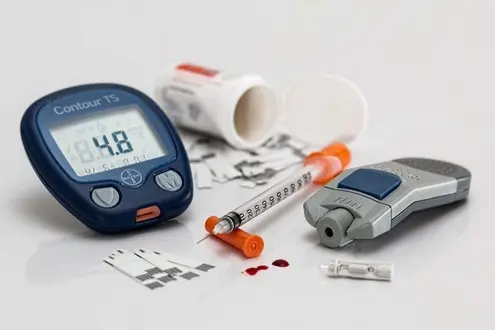Diabetes is one of the most common lifestyle diseases. About 90% of cases are type 2 diabetes. Diabetes is actually a symptom of high blood sugar levels. However, the reasons for this are different in type 1 and type 2 diabetes.
Damage to beta cells
Type 1 diabetes is caused by damage to the so-called beta cells of the pancreas, which produce insulin. Due to the lack of insulin, the body is unable to transport sugar from the blood to the tissues, and its level in the blood increases rapidly.
This disease most often begins in childhood or early adulthood and is primarily caused by an autoimmune response against beta cells. But why the body produces antibodies against them is still being investigated. One option being investigated is vitamin D deficiency.
Studies have repeatedly shown that by administering vitamin D at least in autumn and winter (especially in pregnant women), we reduce the risk of this disease. However, once the disease occurs, the only treatment option is insulin.
Inability of the body to process glucose
The situation is different with type 2 diabetes. Here, there may be enough insulin, and sometimes the pancreas even produces excess of it. But human tissue cannot respond sufficiently to it and use it to transfer sugar into the tissues. This condition is called insulin resistance.
The causes of this disease, unlike the previous type of diabetes, are known. It is primarily an unhealthy lifestyle, improper diet, overweight and lack of exercise.
But there is also good news from this. If we take preventive care of our health, the risk of developing this disease is very low
Impaired glucose tolerance
It is also important to mention that there is still a precursor to diabetes, which we call impaired glucose tolerance. Thanks to it, the blood sugar level is slightly above normal, but not as high as in diabetes. In this case, the body does not respond sufficiently to the glucose load and therefore sometimes has elevated blood sugar levels.
Unfortunately, this condition already increases the risk of cardiovascular complications, such as myocardial infarction or stroke. There is also a danger that impaired glucose tolerance will develop into type 2 diabetes.
What is so dangerous about diabetes?
What is the danger? On the one hand, there are extreme fluctuations in blood glucose levels, both in the positive and negative directions, which can lead to coma, on the other hand, there are complications associated with long-term increases in blood glucose levels.
It is mainly damage to small vessels and nerves, which may subsequently result in bleeding from the lower limbs requiring amputation, there is also pain due to neuropathy, further damage to kidney failure requiring dialysis and finally diabetic retinopathy leading to blindness.
How to prevent diabetes
Therefore, it is necessary to keep blood sugar levels as low as possible. The basis, of course, is changing eating habits and incorporating regular exercise into your daily routine.



